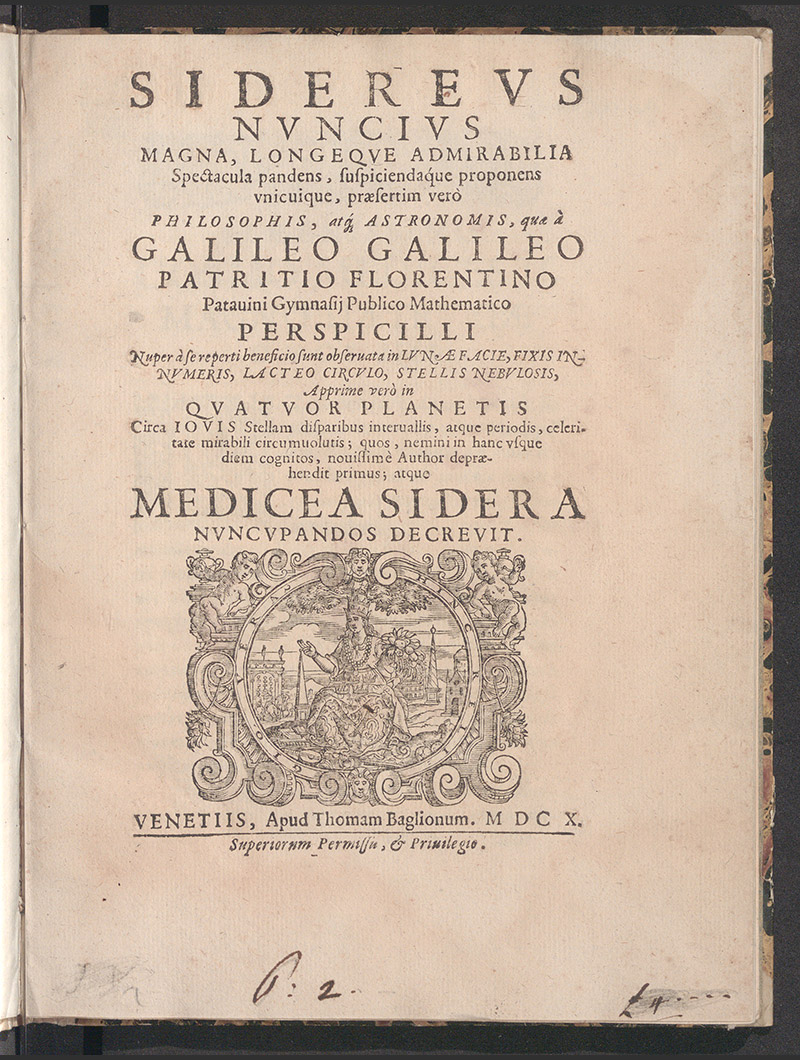The Starry Messenger

- Title page.
- Galileo Galilei (1564-1642).
- Sidereus Nuncius Magna, longeque admirabilia spectacula pandens, suspiciendaque proponens unicuique, præsertim vero philosophis atque astronomis, quæ a Galileo Galileo Patritio Florentino Patavini gymnasii publico mathematico perspicilli nuper a se reperti beneficio sunt observata in Lunae facie, fixis, Lacteo Circulo, stellis nebulosis, apprime vero in quatuor planetis…Medicea Sidera nuncupandos decrevit.
- Venice: Thomas Baglionus, 1610.
Published in Venice in 1610, the Sidereus Nuncius (The Starry Messenger) is a 60-page illustrated booklet containing the results of Galileo’s telescopic observations from October 1609 to January 1610, including the phases of the Moon, previously unseen stars in the constellations and the Milky Way, and the discovery of what he then called four “stars”, or “planets”, orbiting around Jupiter.
Being anxious to take professional advantage of his recent astronomical discoveries, Galileo decided to reestablish his connections with the most powerful family from his native Tuscany: the Medici. During previous summers, he had been tutor of mathematics to Cosimo de’ Medici, who in 1609 became Grand Duke Cosimo II of Tuscany. On January 30, 1610, Galileo wrote a letter to the Grand Duke, explaining that he was preparing the printing of his extraordinary findings, promising to send him a copy. Upon hearing that the Tuscan Court enthusiastically approved this future publication, on February 13 he sent another letter proposing to call these four new “planets” either with the name of the Grand Duke, calling them Cosmian, or with the names of all four brothers, that is, Medicea Sidera (Medicean Stars). As the title page shows, the latter option prevailed.
Select Bibliography
- Galilei, Galileo. 2015. Sidereus Nuncius or The Sidereal Messenger. Ed. & com. Albert Van Helden. 2nd edition. Chicago - London: The University of Chicago Press.
- Needham, Paul. 2011. Galileo Makes a Book: The First Edition of Sidereus Nuncius, Venice 1610. Vol. 2 of Bredekamp, Horst et al., eds. Galileo’s O. 2 vols. Berlin: Akademie Verlag.
- Van Helden, Albert and Owen Gingerich. 2003. “From Occhiale to Printed Page: The Making of Galileo’s Sidereus Nuncius.” Journal for the History of Astronomy 34 (3): 251-267.